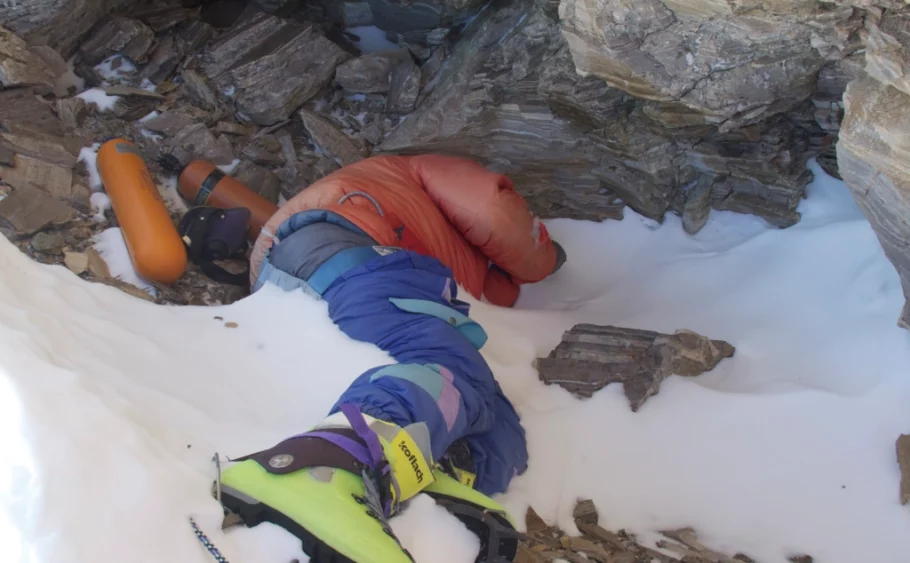

Talk to Trip Expert
+977 9704823980 (Whatsapp)






Talk to Trip Expert
+977 9704823980 (Whatsapp)Mount Everest is 8,848 meters (29,029 feet) high. It stands for the highest level of human achievement and is a strong reminder of how powerful nature can be. It’s the top of the mountain for climbers, and it’s a rare occasion for them to stand on top of the world. The mountain is also dangerous, though, with bad weather, dangerous paths, and the Death Zone, which is above 8,000 meters high and where people can’t live for long.
One of the heartbreaking stories about how lovely and deadly Everest is is Everest Green Boots. They believe this is all that is left of Tsewang Paljor, an Indian climber who died in 1996. Climbers use Everest Green Boots as a point of reference, and it serves as a stark reminder of how hazardous the mountain can be. It is in a small cave on the Northeast Ridge at a height of 27,900 feet.
Tsewang On April 10, 1968, Paljor was born in the northern Indian highlands in the village of Sakti, Ladakh. Paljor grew up in a place with rough terrain and beautiful views, so he was used to the problems that nature could cause. He loved climbing mountains since he was a child, even though the terrain was hard. His passion for mountain climbing ultimately influenced the careers he selected.
In order to pursue a fulfilling career that would allow him to travel, Tsewang Paljor joined the Indo Tibetan Border Police (ITBP). Even in extremely harsh weather conditions, such as during high-altitude mountaineering, this elite paramilitary group protects India’s northern borders. Paljor joined the ITBP to help his country and get better at climbing.
People are aware that the force undergoes rigorous training for border security and high altitude survival. This makes it a great place for Paljor to prepare for the most difficult climbs, such as Everest.
People quickly learned about his hard work and the skills he picked up while working with the ITBP. He was chosen to go on India’s first trip to Everest via the Northeast Ridge. Paljor might push himself to the limit and reach his goal of climbing the world’s tallest peak on this route, which is less popular and considerably harder than the South Col path. He was able to promote the ITBP and his country while also testing his climbing skills and pushing the limits of his endurance and determination by climbing one of the hardest mountains on Earth.
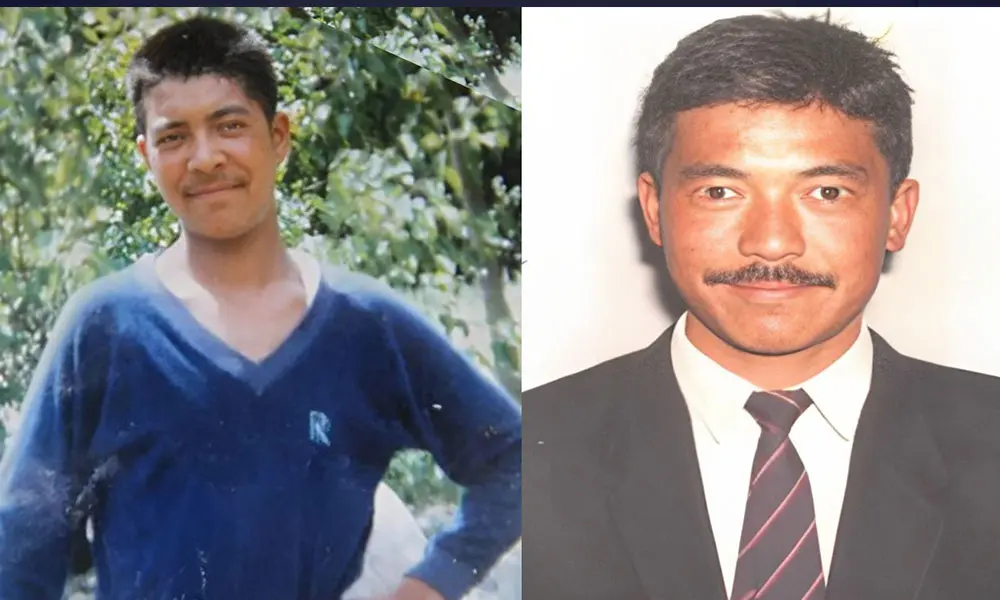
People know Rainbow Valley on Mount Everest for how diverse the colors look. It is in the Death zone, which starts at 8,000 meters and goes down to the top. The brightly colorful garments of dead climbers are all over the place, and they really stand out against the hard white snow. This makes the place look gorgeous and spooky. Many people have died from tiredness, altitude sickness, severe cold, or fast changes in weather when climbing at high altitudes in this area.
Getting bodies back from such high elevations is quite hard and complicated, thus a lot of climbers stay where they fell. So, Rainbow Valley is both a warning and a memorial to those who had the guts to summit Everest. It makes climbers think about their goals and the dangers of climbing, and it shows how different the climbers’ bright gear is from the harsh conditions on the mountain.
The sorrowful name sleeping Beauty of Everest was given to Francys Arsentiev, an American climber who perished on Mount Everest in 1998. he goal of Arsentiev’s mission was to be the first American woman to climb Mount Everest without using extra oxygen. She did it. But the fall was a disaster. She lost her way and was overtaken by the severe conditions in Everest’s death zone, so she and her husband, Sergei Arsentiev, went their own ways.
Arsentiev’s body was safe and sound since it was so cold. Her bright purple and yellow climbing clothes gave her the nickname The Queen of the Mountain and made her a lasting symbol of Everest’s deadly beauty. Her death is a terrible reminder of how perilous it is to climb the tallest peak in the world. People worked to move her remains from their exposed location in the years that followed. This was a way to honor her memory and remember her brave but doomed expedition on Everest.
In the spring of 1996, Tsewang Paljor and his team from the Indo Tibetan Border Police (ITBP) set out on a risky mission to climb Mount Everest via the Northeast Ridge. This path was notorious for being hard to climb and having few people on it, which made it a one of a kind challenge that only the greatest climbers were prepared to take on. The Northeast Ridge route was less popular than the South Col route because the weather was unpredictable and climbers had to use technical climbing abilities that pushed them to their limits at every turn. The six experienced climbers on the team were desperate to raise their flag on top, even though they knew that every breath and step may be their last.
The 2 PM rule is a well known safety rule that climbers must follow when they go to the top of Everest. This regulation makes sure that climbers have enough light to get back to their camp safely before it gets dark. This is particularly crucial because the weather is so awful and you can’t see very well at night. The ITBP team couldn’t climb to the top on May 10, 1996, nevertheless, since the magnetic pull was too strong.
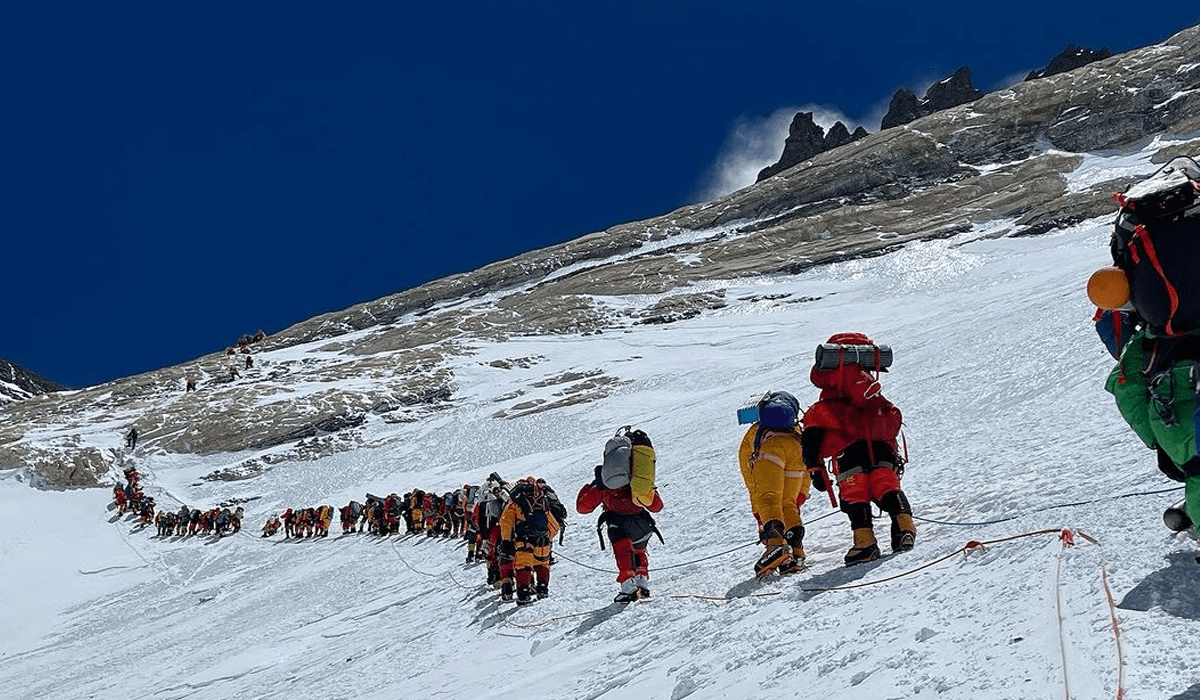
They were so happy to reach the peak that they might not have realized how swiftly and severely the weather can change on Everest. So they decided to keep going up even though they were told to turn back.
They put themselves in risk by going past the 2 PM deadline. This decision set off a series of events that would make this one of the worst days in the history of climbing Everest. The crew didn’t observe this key safety rule, which put them in danger of the bad weather during the most dangerous part of their climb. This had serious consequences.
As Tsewang Paljor and his friends got closer to the top of Mount Everest, an unexpected and powerful blizzard hit them. The weather at the top of the tallest mountain in the world went from clear skies to a roaring storm in just a few seconds. The snow swirled angrily around the climbers. It was hard to discern the earth from the sky because the visibility was so low. The powerful gusts and freezing temperatures ripped through their gear, making them feel cold to the bone and the ground very slippery. The mountain’s well known instability had showed itself in the most horrific way possible, turning a hard climb into a fight for life in just a few minutes. The climbers had to deal with being at a high altitude, being weary, and being in a location that had quickly become deadly
The climbers’ descent turned into a frenzied effort to find their way amid the blinding snow and deadly winds in the heart of the blizzard. The group got disoriented and confused as they tried to go down, and Paljor lost track of the others. He was alone and up against the harsh forces of nature when he found a little outcropping of a shallow cave that only gave him a little shelter from the storm Paljor tried to protect himself from the weather in this small shelter by huddling inside.
His survival gear barely kept him warm enough to stay alive in the freezing weather. The storm kept getting worse, and the isolation and severe surroundings were too much for him. In that small refuge, Paljor gave in to the mountain. His body, which was identified by his unique green boots, stayed in the cave undamaged and preserved by the cold temperatures. Soon, climbers would remember this place, where Paljor died, as Green Boots. It would be a sad and moving monument on the dangerous slopes of Everest, a stark reminder of the mountain’s great power and the thin border between adventure and tragedy.
No, the guy known as Everest Green Boots, regarded Tsewang Paljor, was not solo during his ill-fated ascent of Mount Everest. In 1996, he was part of a trio from the Indo-Tibetan Border Police (ITBP) who sought to climb the summit via the steep Northeast Ridge. That day, the team made it to the top, but things went wrong on the way down. A strong storm and blizzard hit, bringing very cold weather, strong winds, and very low visibility.
As the weather deteriorated, one of Paljor’s comrades decided to turn back, but Paljor and another climber, Tsewang Samanla, pushed forward. Sadly, both guys died because of the harsh weather on their way down. After that, Paljor’s body was left in a small limestone cave along the Northeast Ridge. Now, it is a well-known landmark called Green Boots.
In 1996, a bad blizzard on Everest killed Green Boots. He and a teammate kept going to the top even though the weather was getting worse.
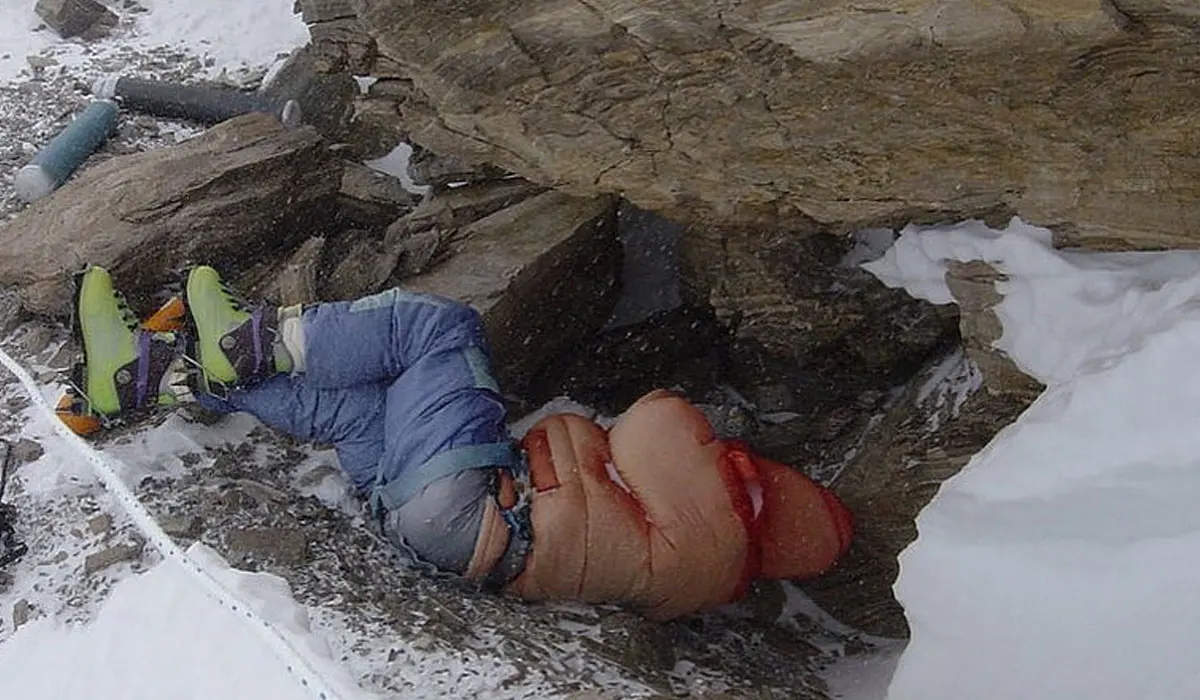
They died in the infamous “death zone” on their way down because of the extreme cold, exhaustion, and bad visibility. Paljor’s body is still on Everest, and his green boots make it easy to tell who he is. It is a sad reminder of how dangerous the mountain is.
Yes, Green Boots’s body is still on Everest.People think it is Tsewang Paljor, and it is in the same small cave on the Northeast Ridge where he died in 1996. Even if there are stories that the body was moved or covered up, it is nonetheless a recognizable and scary sight for climbers on the way to the top.
The body of Green Boots, who was named Tsewang Paljor, was found in a limestone cave along the Northeast Ridge trail of Mount Everest. The cave was around 8,500 meters above sea level. This cave is in the death zone of Everest, where the air is thin and dangerous. It is an important landmark for climbers coming from the north who want to reach the top.
Tsewang Paljor’s mother was very worried about her son’s trip to Everest in 1996. Paljor was used to hard conditions because he grew up in Ladakh, India, which is notorious for its high-altitude, harsh weather. But Everest was different in a lot of ways. Paljor’s mother was scared about the perilous climb because she might lose her son, but he did it nonetheless because he wanted to and because he was proud of his country. Sadly, her greatest fears came true when Paljor died during the descent in a terrible blizzard, bringing his ambitious project to a tragic end.
I have to
The climbers split off as they went down. Paljor, who was probably confused and tired, found shelter in a small limestone cave. He cuddled up here to keep warm from the cold. The elements, however, were too strong for him.
Paljor’s body was found in the cave, where his bright green Koflach boots were easy to see. At the time, these boots were a popular choice among climbers, and they were a big part of who he was. Climbers who passed by soon called his body “Everest Green Boots” since it was close to a hard part of the path.
Green Boots has had an unofficial landmark over the years on Everest along the Northeast Ridge. A majority of climbers tend to make a stopover to have a rest or even reconsider their oxygen reserves at the cave. Although having the symbolic movement is comfortable, the symbolic person is frozen and some are disturbed through the appearance of the frozen person only.
A climbing corpse of a mountaineer as a navigation point of reference has been one of the controversies in the mountaineering circles. Is it going to be a proper attitude to leave a dead body naked in a mountain? Or do we have a diktat of remembering perils of Everest? Green Boots to a majority of people is a symbol of danger in pursuing excellence.
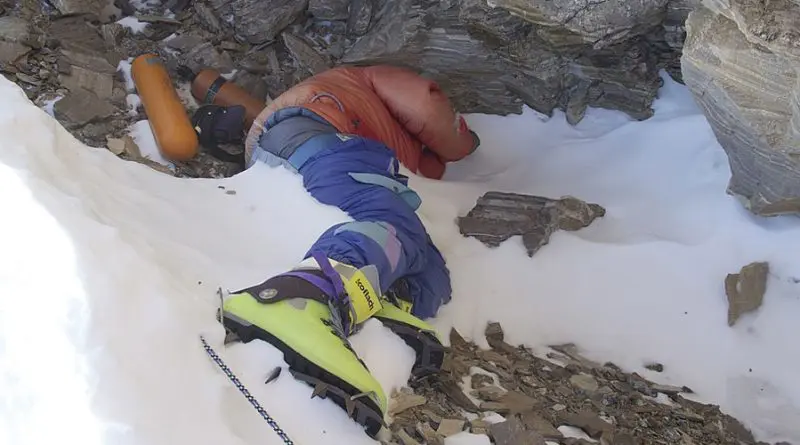 Facts on the Death Zone
Facts on the Death ZoneDeath Zone is also an appreciation of the depths that man has gone to the point of 8,000 meters. The oxygen amounts are far below low and the temperature could as well drop down to -30 oC. It is very hard to get at the removal of a body at this height, and a display of the individuals who make the attempt, very hazardous.
The cost of removing a body on top of Everest may surpass even 70, 000 dollars. The reason that families will not opt to recover is removal of products based on technological problems and the cost of retention. People have a lot of assumptions that the mountain will serve as the grave of their loved one.
Everest Green Boots body was stated to be transported or buried in the year 2014. However, in 2017, climbers stated that the body is still at the location it was found and there are boulders covering the corpse just to show its respectfulness.
Historical adherence After writing his masterpiece, Surety, Vindenne was convinced that the appearance of the book was nothing short of an inescapable historical adherence.
The mountain is hazardous and the Green Boots is a living reminder of the same. His existence in the Everest has raised various controversies as far as ethics of climbing the elevated areas in the sky and the price of human desire is concerned.
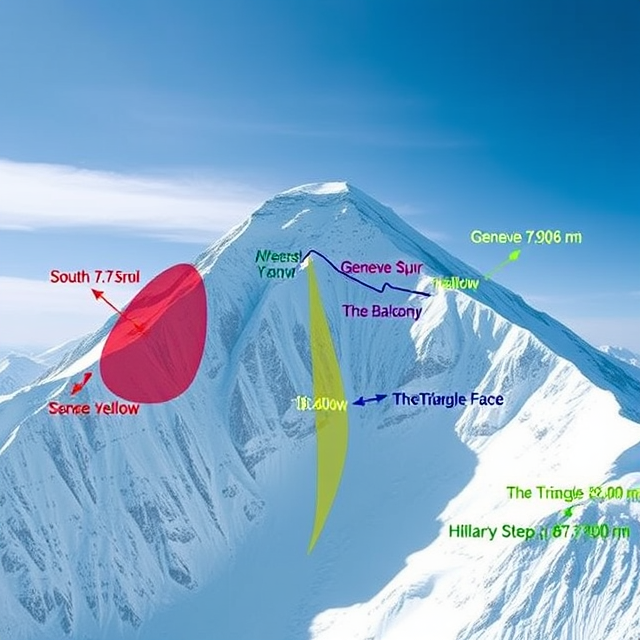
The regions of lowest available oxygen are the Death zone on mount everest (8,848 meters). In such areas, climbers experience great hardships such as hindered thinking abilities, unconsciousness and even fatalities. Mount Everest is home to some of the notorious Death Zones listed below.
South Col (7,906 m). It is a death and dangerous area on the edge of Everest measuring 7,906 meters. In such an elevated area, mountaineers experience serious lack of oxygen, which may result into altitude illness, brain edema, and ultimately, death.
Geneva Spur (7,906 m). Geneva Spur is a steep peak also 7,906 meters and conditions are dreadful. Here, climbers struggle in strong winds and slippery icy walks, which are compounded by the low levels of oxygen, and this makes it one of the most risky climbs segment.
The Balcony (8,440 m). Located at an approximate altitude of 8,440 meters, The Balcony is a famous Death Zone whereby climbers usually exhibit signs of extreme exhaustion, lack of oxygen and experience failure when they find it hard to coordinate both their minds and bodies, and this exponentially increases the risks of altitude sicknesses and death.
The Hillary Step (8,790 m). One of the last and riskiest areas before the summit is the Hillary Step; it is at a height of 8,790 meters. Riders are forced to attack this sheer rock wall with minimal oxygen and are exposed to high degrees of both physical and psychological stress that increase the chances of succumbing to high-altitude sickness and death.
The regions are war zones where practitioners face a faceoff with the harsh climatic conditions. Death Zone presents a number of hazards involved including limited oxygen, freezing cold temperatures, and high winds, which all require a huge effort of a person. This atmosphere has the ability to cause summit fever which causes climbers not to consider any looming danger as they strive to reach the top.
His tale of Paljor shows that it is of utmost importance to be humbled before the power of nature. The Everest requires respect, preparation and caution to all mountaineers who want to climb its ridge.
Communication and teamwork are the main essentials, which the climbers should focus on because they are the only solution to the high-altitude expedition needs. The end of Paljor is the bitter warning of what may happen when climbers are cut off.
The story of Green Boots depicts the thin line between two behaviours of courage and recklessness. Although it is ambition that motivates climbers to reach greatness, it should be coupled with reasonable thinking and following safety regulations.
In the end, the story of Everest Green Boots is a powerful reminder of how dangerous and difficult it is to climb at great altitudes. Tsewang Paljor’s untimely death, which was identified by his unique green boots, became a sad monument on Mount Everest. This shows how close ambition and danger may be on the world’s highest peak. This lasting emblem honors the climber’s final sacrifice and serves as a warning to future climbers. When we think about Green Boots‘ legacy, we remember how much respect and preparation it takes to interact with nature at such high altitudes.
Green Boots is believed to be Tsewang Paljor, an Indian climber who tragically lost his life during the disastrous 1996 Everest expedition.
The body is a stark reminder of the dangers of high-altitude climbing, marking a key location on the Northeast Ridge route and reminding climbers of the respect and caution Everest demands.
Green Boots highlights the critical importance of ethical decision-making in mountaineering, underscoring the need for adherence to safety protocols and the moral considerations of climbing in areas where climbers have perished.
The green boots are distinctive because they are an unusual and noticeable feature on a climber’s body, making them a notable landmark on Everest’s landscape.
It originated from the vivid green mountaineering boots Tsewang Paljor wore, which remained visible to climbers passing his resting place.
After its discovery, the body remained in the exact location and became a well-known waypoint for climbers navigating the death zone.
Climbers often respond with solemnity and reflection, recognizing the site as a somber reminder of the risks of summiting Everest.
Yes, there are other landmarks on Everest, such as the Rainbow Valley, adorned with the brightly colored gear of fallen climbers, and other specific locations where climbers have perished and are similarly remembered.
Green Boots became famous as a poignant symbol of the perilous nature of high-altitude climbing and as one of the most identifiable markers on the route to Everest’s summit.
Bodies are often left on Everest because retrieving them from the harsh, high-altitude environment is extremely difficult and risky.
As of the last reports, the location known as Green Boots still exists on the Northeast Ridge route, though it has changed over the years due to shifting ice and occasional efforts to cover or move bodies.
Climbers can learn the vital importance of preparation, respect for the mountain, and the need to prioritize safety over summiting, taking to heart the lessons taught by those who have come before.

